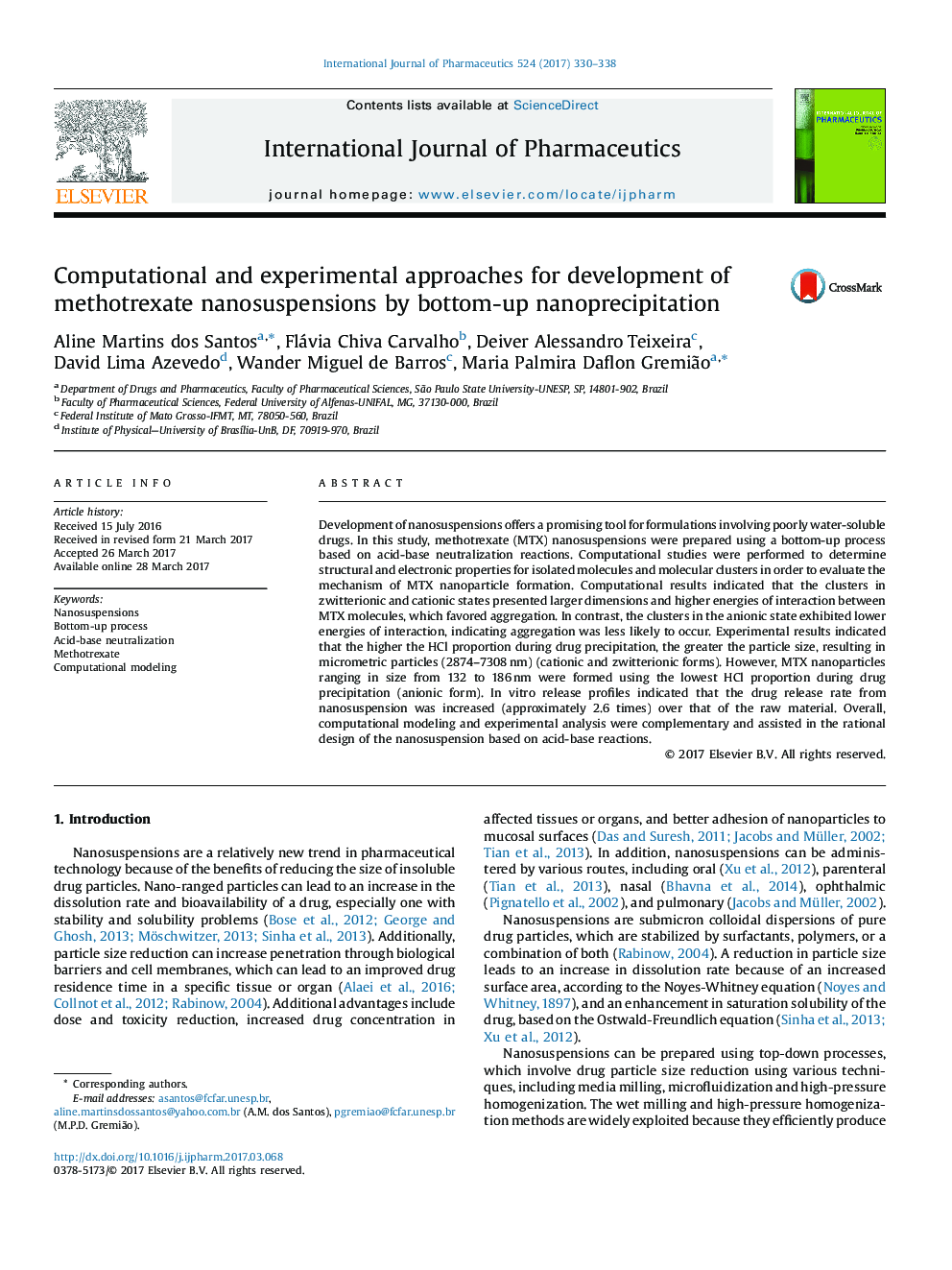| کد مقاله | کد نشریه | سال انتشار | مقاله انگلیسی | نسخه تمام متن |
|---|---|---|---|---|
| 5550500 | 1557292 | 2017 | 9 صفحه PDF | دانلود رایگان |
- MTX nanosuspensions were obtained by bottom-up method based on acid-base reactions.
- Computational modeling evaluated the mechanisms of MTX nanoparticle formation.
- Precipitation conditions of the drug and its effect on particle size were evaluated.
- Nanosuspensions significantly enhanced the dissolution rate compared with raw MTX.
- Computational modeling corresponded to experimental results.
Development of nanosuspensions offers a promising tool for formulations involving poorly water-soluble drugs. In this study, methotrexate (MTX) nanosuspensions were prepared using a bottom-up process based on acid-base neutralization reactions. Computational studies were performed to determine structural and electronic properties for isolated molecules and molecular clusters in order to evaluate the mechanism of MTX nanoparticle formation. Computational results indicated that the clusters in zwitterionic and cationic states presented larger dimensions and higher energies of interaction between MTX molecules, which favored aggregation. In contrast, the clusters in the anionic state exhibited lower energies of interaction, indicating aggregation was less likely to occur. Experimental results indicated that the higher the HCl proportion during drug precipitation, the greater the particle size, resulting in micrometric particles (2874-7308Â nm) (cationic and zwitterionic forms). However, MTX nanoparticles ranging in size from 132 to 186Â nm were formed using the lowest HCl proportion during drug precipitation (anionic form). In vitro release profiles indicated that the drug release rate from nanosuspension was increased (approximately 2.6 times) over that of the raw material. Overall, computational modeling and experimental analysis were complementary and assisted in the rational design of the nanosuspension based on acid-base reactions.
156
Journal: International Journal of Pharmaceutics - Volume 524, Issues 1â2, 30 May 2017, Pages 330-338
